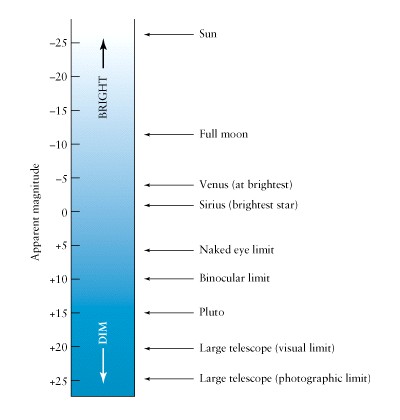Astronomers talk about two different kinds of magnitudes: apparent and absolute.
The apparent magnitude, m, of a star expresses how bright it appears, as seen from the earth, ranked on the magnitude scale. Two factors affect the apparent magnitude:
- How luminous the star is
- How far away the star is from the earth.
Absolute magnitude , M, expresses the brightness of a star as it would be ranked on the magnitude scale if it was placed 10 pc (32.6 ly) from the earth. Since all stars would be placed at the same distance, absolute magnitudes show differences in actual luminosities.

Stars of first magnitude are 100 times brighter than stars of sixth magnitude; a difference of 5 magnitudes corresponds to a brightness ratio of 100. A difference of 1 magnitude then amounts to a brightness ratio of 2.512. This strange number pops up because.....
2.512 x 2.512 x 2.512 x 2.512 x 2.512 = 2.512 5 = 100, another way of stating that a difference of five magnitudes equals a ratio of 100 in brightness.
